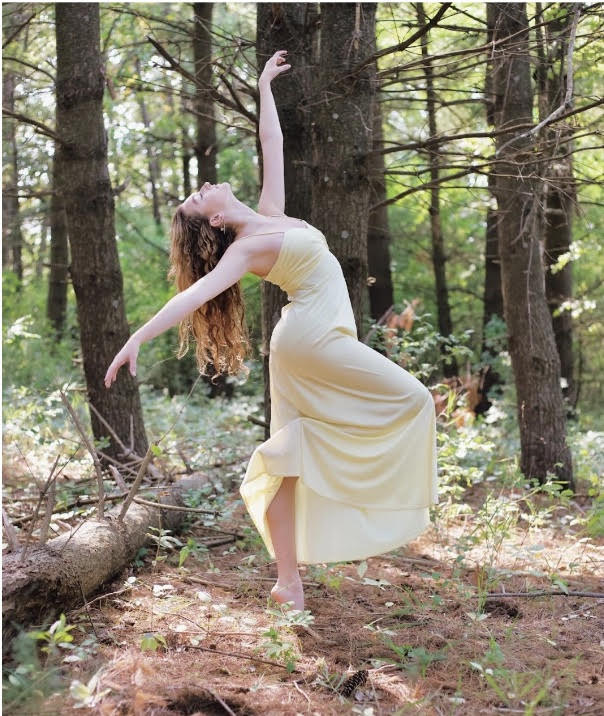Alena Corniea, a sophomore dance major at the University of Minnesota, said she struggled with body image and disordered eating during her early teenage years related to her dance environment.
Corniea grew up admiring professional dance theaters like the American Ballet Theatre and the Royal Ballet but only saw thin women represented. Corniea developed an eating disorder, which she said severely affected her dancing, as she entered her teenage years and her friends started talking more about their insecurities.
“I didn’t have enough energy to get through classes, and my body felt really weak,” Corniea said. “I just came to realize I was never going to get to the body type I wanted, but it also wasn’t sustainable for me.”
Dancers like Corniea feel constant pressure to fit the prefixed, thin ballet body embedded in dance culture. Body positivity and representation have been an ever-growing trend in recent years. However, the dance world struggles to grow out of its old habits.
The University of Minnesota states it actively combats negative body standards and disordered eating for its dancers, encouraged by its motto of preparing thinking dancers and dancing thinkers, according to the dance department’s webpage.
Ella Kooyer, a senior dance major at the university, said before enrolling at Minnesota, she was also accepted to the Oklahoma City University dance program. The acceptance letter stated there would be regular weigh-ins for the dancers and sent her a graph of her weight and height, which indicated if she lost or gained weight, the dancer would have to meet with the department.
Kooyer said this was one of her first experiences feeling pressure regarding body image in the dance industry.
“I was quite skinny, white and tall and somehow I still felt I had the wrong body,” Kooyer said. “The situation made me contemplate the environment I wanted to put myself in.”
The University of Minnesota Dance Department’s efforts
Eve Schulte, a teaching specialist at the University of Minnesota and the executive director of James Sewell Ballet, said she encourages students to respect their individual practices and bodies.
“It’s not about me telling them what to do or how high to lift their leg,” Schulte said. “The way I lead combinations, it sidesteps the negativity that ballet can have and prioritizes supporting the individual and their practice.”
In her past dance education, Schulte said that, although she retained a healthy relationship with nutrition and her body, she did notice negative comments regarding body image from teaching staff and how they affected her friends and other students. Schulte recounted when a director commented a week before a show that the dancers should only drink black coffee until the performance was over.
The dance department at the university does not require leotards and tights, traditionally the uniform of dancers, which can make dancers feel very exposed and insecure, according to Penelope Freeh, a dance artist and theater arts professor. Student dancers are encouraged to wear proper dance or athletic wear that they feel comfortable in, as the staff believes attire is unrelated to the student’s growth.
Additionally, the department ritually covers mirrors so the dancers can focus on the feeling and movement rather than using the mirror to impersonate or mimic, Freeh said.
“I feel like we have liberated ourselves from what can be a very destructive tool,” Freeh said.
The department does not privilege ballet over other types of dance, which is common in the industry as many dance companies see ballet as the origin of professional dance, Freeh said.
“Students are learning ballet in a context where ballet is one of many forms that they are embodying,” Freeh said.
The history of the ‘ballet body’
Ballet originated during the 15th Century Italian Renaissance before migrating to France via Catherine de Medici, wife of King Henry II, and gaining popularity among the French court, according to the Pittsburgh Ballet Theatre. The dance style was primarily taught among the upper class until 1681, when ballet moved from court life to a public event and became more commercialized.
Ballet bodies originally matched the voluptuous upper-class woman body type of this era and continued to follow popular beauty trends until ballet became an industry and professionals started to favor smaller bodies to train and lift, Freeh said. When the 1920s flapper body type was popularized, it further encouraged the ballet body.
Ballet body types have also followed social trends from their origin until the 1920s when a thin body became the norm. Historically, the expectation for dancers to be slender derived from children’s bodies, which were easier to lift and train, Freeh said.
Laura Anne Virtucio, a senior teaching director in the university’s dance program, believes the root of body standards in the dance industry lies in white supremacy and the heritage of ballet.
“I believe that there is a lot of white supremacy in some of these mainstream Euro-centric practices that ballet fits into,” Virtucio said. “I look at these parts of white supremacy like perfectionism, independence and kind of a pull yourself up by your own bootstraps kind of mentality, which is all embedded in ballet’s heritage and structure.”
The University of Minnesota Dance Team
The University’s dance team, three-time worlds and 22-time national champions approaches health and wellness a bit differently than the dance department, with regular ballet classes and weightlifting in addition to their practices, according to Morgan Peterson, a senior on the dance team.
Peterson said she feels more can be done to support the dancers. The dance team is one of the only teams on campus that does not have a nutritionist or sports psychologist.
“They bring in the football nutritionist for us like once a year,” Peterson said. “It just doesn’t really help since football and dance are so different. Given that nutrition is nutrition, I just think it would be so helpful to get a specialized dance nutritionist for the team.”
Additionally, Peterson said the dance team was scheduled to lift weights at 5 a.m. during their season in the oldest weight room of the Athletic Village, which they called “the dungeon.” Peterson recalled several instances where the dancers would show up to lift and the university would have sold equipment without letting the dance team know.
New York City’s recent weight and height ban
New York City Council recently passed a law banning employers from discriminating on the basis of height and weight on job applications, according to NYC.gov. The approval followed several other cities in the U.S. passing similar legislation.
The law prohibited dance companies like New York City Ballet, American Ballet Theater and Radio City Rockettes, along with every performance company, from using height and weight as a hiring factor, which was previously standard in the industry, according to the New York Times.
Asking for height and weight is irrelevant to the ability and talent of the dancer, Schulte said. The only instances that Schulte thought height may be an issue were significant partnering or costumes, but still thinks it is unnecessary for auditioning.
“You’re not going to the Rockettes to see what 5 feet 7 inches looks like,” Schulte said. “You’re going to see glam, glitz and amazing dancing.”
Since the passage of the law, dancers have hoped for a change in body diversity among professional dance institutions, according to the New York Times.
Corniea said she hopes the dance industry continues to change in a positive way.
“I don’t think there is any excuse the dance industry can make that would justify encouraging smaller dance bodies or weight loss,” Corniea said. “Those ideals are not our society’s reality anymore.”





















TP
Jul 8, 2024 at 4:47 pm
Professional athletes are constantly weighed and measured and tested for competencies. Pro football players are compelled to go to training camps where they are told exactly what to eat, what to drink, when to go to bed, when to get up, what they should weigh in the morning, what they should weigh at the end of practice. Do you hear them complaining? Do you hear college players who were rejected by the pros complaining about fat discrimination or that their hands weren’t big enough or they couldn’t run fast enough?
America is in the middle of a fat epidemic where socio-political forces are trying to normalize the disease and make overweight people out to be victims of society instead of victims of eating habits and poor choices. A liter of milk is today $1.33; a liter of Coca Cola is $1.86. Overweight is a matter of choices and lifestyle (however, acknowledging that a small subset of overweight people have metabolical or other health issues that contribute to extra weight). It has nothing to do with economics or availability of fresh fruit.
It’s a shame that early on someone didn’t strongly advise Ms. Corniea to devote herself to another form of dance if she was intent on making it a profession. Ballet is for EVERYONE, but that does not mean that everyone should get paid to do it on stage in front of an audience.
Doesn’t the UM basketball program choose players based on size and reach in addition to skill? Should those who are rejected feel like society has slighted them because they are not tall enough or skilled enough? Or maybe we just want to say that basketball is more important than frivolous ballet; so, it’s okay for basketball to maintain physical requirements and standards, but it’s not okay for ballet to do the same.
Anybody who doesn’t understand the need for a professional ballet dancer to be able achieve balletic architecture with his/her body doesn’t understand the art form.